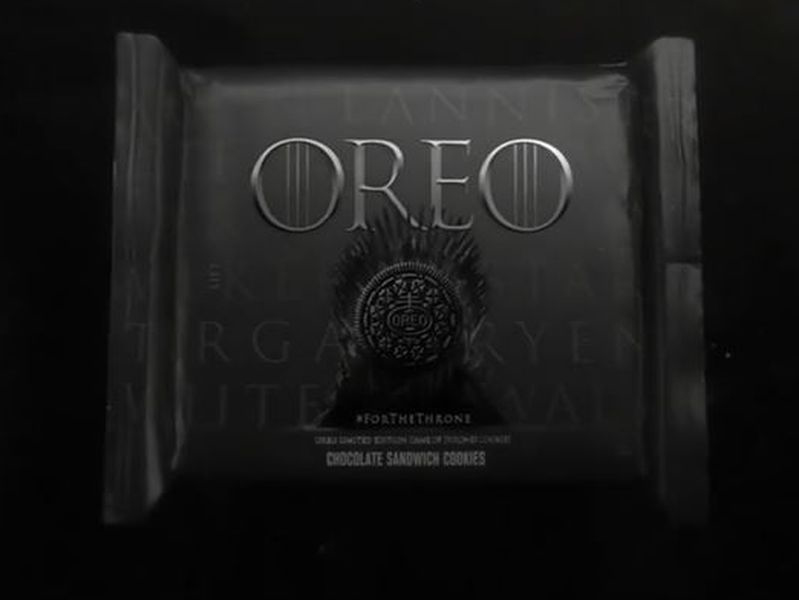Oreo’s Homage to “Game of Thrones”

For the two or three people in the modern world who don’t know, Sunday April 14thmarks the start of the eighth and final season of “Game of Thrones” on HBO TV. Based on the adaptation of “A Song of Ice and Fire” book by George R.R. Martin, “Game of Thrones” is a medieval fantasy epic that chronicles the violent dynastic struggles of noble families vying for the Iron throne in the Seven Kingdoms of Westeros. The HBO series, created by David Benioff and D.B. Weiss, is predicted to attract more than one billion viewers worldwide in its final season.
For the two or three people in the modern world who don’t know, Sunday April 14thmarks the start of the eighth and final season of “Game of Thrones” on HBO TV. Based on the adaptation of “A Song of Ice and Fire” book by George R.R. Martin, “Game of Thrones” is a medieval fantasy epic that chronicles the violent dynastic struggles of noble families vying for the Iron throne in the Seven Kingdoms of Westeros. The HBO series, created by David Benioff and D.B. Weiss, is predicted to attract more than one billion viewers worldwide in its final season.
Season eight provided the perfect opportunity for Oreo to issue special edition cookies that would appeal to “Game of Thrones” fanatics. Instead of showing its brand as a friendly chocolatey snack, Oreo emphasized the stark black-and-white appearance of its cookies and stamped them with the crests of the fictional warring families. The packaging, too, showed the sinister-looking iron throne. Oreo and HBO took this brand pairing a step further by teaming with Elastic Creative to substitute the show’s title sequence with a cookie-built version made entirely out of 2,750 Oreos. The brand campaign is so imaginative that the limited edition offering is selling out as fans join in the fun of munching on “Game of Thrones”-themed snacks.

